Home » 2018
Yearly Archives: 2018
John Jay Scholars on the News – Vaccines and the Flu

It’s winter, which we sometimes call “flu season.” In fact, “you can catch influenza at any time during the year if exposed to the virus, and its severity is the same regardless of when you get sick,” says Edgardo Sanabria-Valentín. We don’t fully know the answer to why influenza is more common during the colder months. According to Nathan Lents, “The virus is viable for a longer time in cold air, and spreads more readily in dry air. Another reason that may contribute is that winter air dries our mucus membranes, which makes them less effective at preventing viral entry. We also tend to spend more time indoors with closed windows and recirculated air.”
A somber anniversary
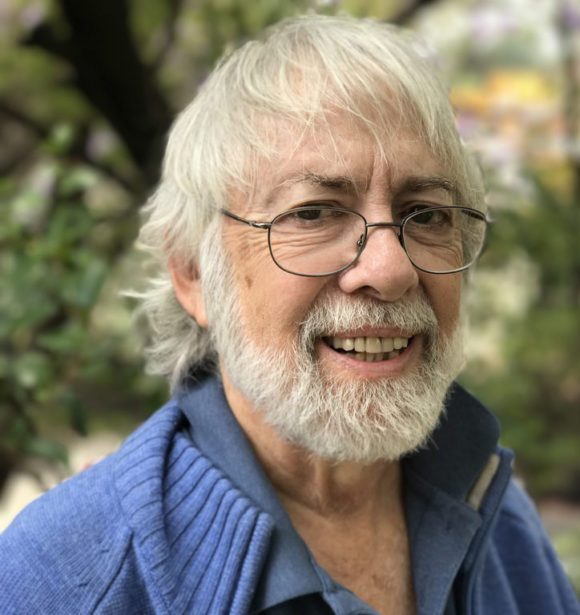
The 2018 flu season was also the 100th anniversary of the infamous global influenza pandemic, a year when more
than 500 million people around the world are estimated to have died from flu. Of that number, 675,000 fatalities came from the United States, with roughly 20,000 from New York City alone. According to Mike Wallace, in his 2018 book Greater Gotham, more Gothamites died of disease in the city than died during World War I; the ongoing war effort actually impaired New York’s efforts to fight the flu, by concentrating soldiers in training camps where disease could spread and by taking much-needed medical personnel away from home to establish medical camps near the battlefields in Europe.
Despite the high numbers of fatalities at home, New York of 1918 had a lower death rate than other major cities (4.7 deaths per 1,000 residents, as compared to Boston’s rate of 6.5 and Philadelphia’s of 7.3). This was attributed by Health Commissioner Royal Copeland to New York’s long history of public health work, and particularly the alleviation of unhealthy conditions around the city at the turn of the 20th century.
Vaccines and you
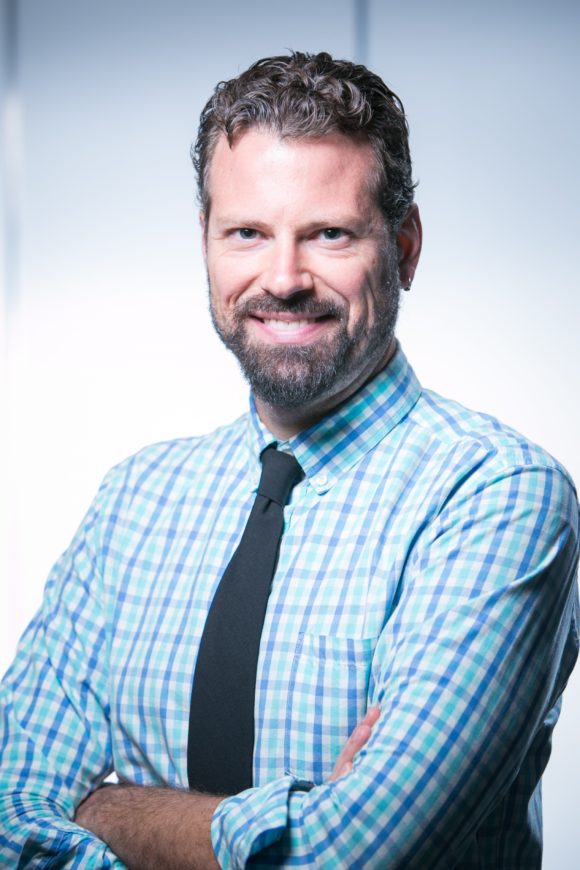
Today, scientific and public health efforts have brought some protection from a repeat of 1918 in the form of vaccines. In the case of the flu, explains Dr. Lents, “Each year’s vaccine is targeted toward the three to four strains that appear to be spreading the most rapidly. The injected vaccine contains killed viruses [from those strains], while the nasal spray contains live but weakened viruses. In both cases, the large dose of viral particles elicits a strong immune reaction from our bodies, including the production of antibodies that can stick around for years or even decades. The second time we are exposed to the same virus, it only takes a day or two to mount the same level of immune response. This ‘priming’ gives the immune system enough of a head start that it usually prevents the infection from ever taking hold.”
Because the influenza virus is so good at mutating from year to year, “no vaccine is 100% perfect, and getting the flu shot will never protect you against 100% of all flu strains,” says Dr. Sanabria-Valentín. But the vaccine will “significantly decrease the risk of getting sick, and will decrease the severity and length of infection, and decrease the chance that you get other people sick” if you do contract the virus.
Vaccinating also helps to protect those around you in other ways, namely by contributing to “herd immunity.” “Some people cannot be vaccinated because they are too young, too old, immune-compromised, or battling other kinds of infections,” says Dr. Lents. When the percentage of people in a population are effectively immunized, it helps to prevent the spread of disease to those who were unable to receive the vaccine. But when the percentage of vaccinated people falls because individuals who otherwise could be immunized choose not to be, it puts vulnerable populations at risk.
Conquering vaccine hesitancy
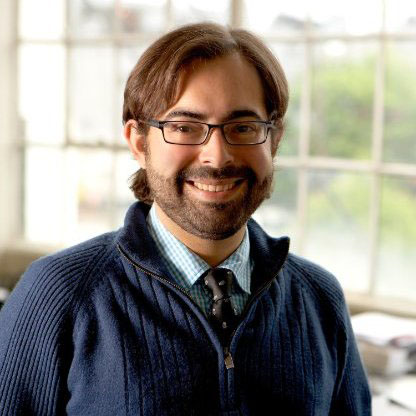
“Controversies about vaccinations have been out there since we adopted this preventative measure almost 100 years ago,” says Dr. Sanabria-Valentín. “There are a lot of myths about vaccinations which are peddled by conspiracy theorists trying to sell you something or by people who might have good intentions but got swindled by ill-intentioned people trying to make a fast buck. One of the most popular ones is that vaccines can cause autism in children. This claim was first made in a study that was demonstrated (by many groups) to be fraudulent; no direct relationship between receiving vaccinations and autism has been found. There is overwhelming consensus among scientists and physicians that vaccines are safe and effective even though, like most medical treatments, in very rare cases they can cause side effects and in even rarer instances can cause serious unintended health problems. There is overwhelming evidence that vaccination has helped not just individuals, but humankind.” Although diseases like smallpox, polio and the measles were all but eliminated by vaccine technology, skepticism about immunization–which many attribute to the rise of social media–has caused some long-gone diseases to stage a comeback.
Dr. Lents stated that “in 2017, 80,000 people died of influenza, the highest number in 40 years. If more healthy people had been vaccinated, that number could have been much less. Each person that decides not to vaccinate adds a little bit of risk to the entire population.” This dynamic played out in October 2018, when measles–which was declared eliminated in the US in 2000–broke out in Williamsburg, Brooklyn. The New York City Department of Health confirmed 42 cases in Williamsburg and Bensonhurst as of mid-December, and is currently barring un-immunized students from attending local schools. And according to The Guardian, Europe is also experiencing a surge in vaccine hesitancy and a corresponding growth in the numbers of new measles cases; Europe will see more than 60,000 new cases this year and 72 deaths, the highest number this century.
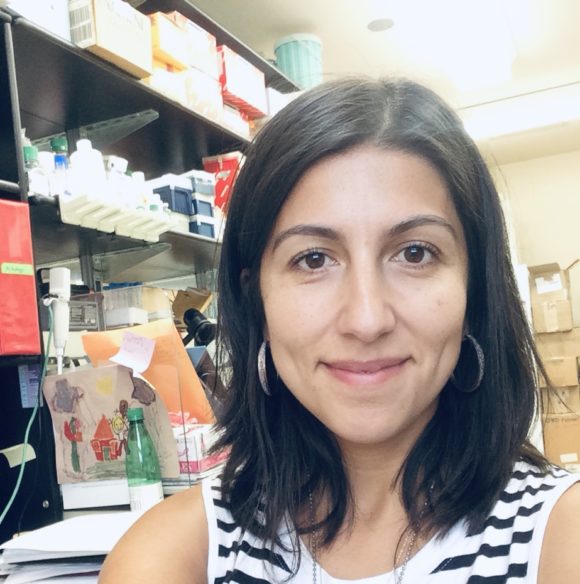
It is generally agreed that fears about vaccine side-effects are overblown, and contradicted by scientific consensus. “Vaccines are constantly monitored and modified as circumstances dictate. The FDA does not approve a vaccine unless initial trials indicate the benefits clearly outweigh the risks. In response to vaccine safety concerns today, healthcare providers have to give vaccine information sheets to recipients clearly describing the risks and benefits of the vaccine. And finally, vaccines are subject to particularly high safety standards because, unlike other health treatments, they are given as preventive measures to protect healthy people,” explains Dr. Evelyn Aranda Jaque. “Although vaccination is not 100% effective, studies on flu vaccination programs have shown that people who get vaccinated are less likely to be seriously ill or die in comparison with those who do not vaccinate. We must consider that the widespread use of vaccines for life-threatening diseases in the United States has led to a dramatic decrease in their incidence.”
Evelyn Aranda Jaque is a substitute Associate Professor at John Jay College, where she teaches classes including Immunology and Microbiology. She received her Ph.D. from the Physiology Department at Pontificia Universidad Católica de Chile. Dr. Aranda Jaque’s research since her doctorate days has largely focused on the role of angiogenesis (the formation of new blood vessels) in tumor progression.
Nathan Lents is a Professor of Biology and Director of the Honors Program and Macaulay Honors College at John Jay College. He holds a Ph.D. in human physiology and postdoctoral training in computational biology from NYU. In addition to his laboratory research, Dr. Lents writes popular science articles, blog and books. His most recent book is Human Errors: A Panorama of Our Glitches from Pointless Bones to Broken Genes.
Edgardo Sanabria-Valentín is the Associate Program Director of John Jay College’s Program for Research Initiatives in Science and Math (PRISM) as well as the college’s Pre-Health Careers Advisor. He holds a Ph.D. from NYU-School of Medicine, and spent three years working in the biotechnology industry. Dr. Sanabria-Valentín is the recipient of the ESCMID Young Scientist Award (2007), a Leadership-Alliance Schering Plough Graduate Fellowship (2006), and the NBHS-Frank G. Brooks Award for Excellence in Student Research (2001).
Mike Wallace is a Distinguished Professor of History at John Jay College and author of Greater Gotham: A History of New York City from 1898 to 1919. Dr. Wallace is also the co-author of Pulitzer Prize-winning Gotham: A History of New York City to 1898 and the founder of the Gotham Center for New York City History at the CUNY Graduate School. He received his undergraduate and graduate degrees from Columbia University.
John Jay Scholars on the News – The Opioid Epidemic
The terms “opioid crisis” or “opioid epidemic” have come to be used as political buzzwords, but what does it really mean to say that America is in the grip of an “opioid epidemic”? According to the Centers for Disease Control, more than 72,000 people in the United States died as the result of an overdose in 2017, and approximately 30,000 of these were from the use of fentanyl and other synthetic opioids — that comes to around 100 per day! Fentanyl, a powerful opioid designed to treat severe and chronic pain, is roughly 100 times stronger than morphine, and is currently being used to adulterate other abused substances, making these overdoses likely to increase.
From the perspectives of policy, policing, and public health, this rash of deaths is worthy of further consideration. John Jay College scholars from across disciplines and research areas tell us what they think has contributed to the trend of deaths from opioid abuse and what approaches may be best suited to tackling the problem.

What is different about the pattern of drug abuse we are seeing today that has caused it to be referred to as the “opioid epidemic”?
Jeff Coots (Director, From Punishment to Public Health Initiative): One main reason for concern around opioids today is that they are simply more deadly than the other drugs we consume. However, the rates of overall illicit drug use are actually quite steady — especially when we remove cannabis consumption from the conversation. The latest results from the National Survey on Drug Use and Health show steady illicit drug consumption from 2002-2013 at about 4%, with those aged 18-25 using a bit more than twice the rate of other age groups. We do see a slight increase in heroin consumption as prescription opioids become less available, but this doesn’t impact the overall rates of illicit consumption.
Heidi Hoefinger (Visiting Scholar, Anthropology): The situation is considered an “opioid epidemic” due to the size of the problem now, and its potential for growth. But this issue is also getting more attention than past drug “epidemics” because it’s a white, middle-class problem, particularly here in New York, with Staten Island and Long Island having some of the highest rates of use and overdose. There has definitely been a “softer” approach to this epidemic as opposed to the “crack epidemic” of the 1980s, which saw much more aggressive law and order efforts resulting in mass incarceration. Many poor people of color are still sitting in prison because of that heavy-handed approach. It’s definitely a good thing that opioid addiction is currently being viewed as more of a public health issue, but it’s extremely problematic that Black and Latinx folks continue to suffer the consequences of racist applications of drug policy.
Can you point to a few of the key factors that you believe are to blame for the current public health crisis?
Jeff: The origins of the current crisis began with the marketing of OxyContin as a non-addictive painkiller in the 1990s followed by the introduction of “pain” as the fifth vital sign in 2001. This led to higher rates of opioid prescription drug use and related overdose fatalities in the early 2000s. The second “wave” of opioid-related deaths are attributed to increased heroin consumption starting in about 2010, following a crackdown on prescription opioid distribution — consumers simply switched to the cheaper and more available opioid. The third wave is attributed to the increased presence of synthetic opioids like fentanyl in the market, starting in about 2013. These synthetics can be much more potent and make it difficult for users to control their dosage, leading to more overdoses.
Marta Concheiro-Guisan (Assistant Professor, Forensic Toxicology): Other socioeconomic factors like unemployment and economically-depressed areas should also be considered in trying to understand the whole problem and the populations most affected by it.
Heidi: The biggest drivers are probably Big Pharma and corporate greed because pharmaceutical companies were deceptive about the true effects of opioids, claiming they were non-habit inducing. They also offered incentives to doctors for prescribing, which led doctors to over-prescribe opioids instead of safer alternatives. Insurance companies typically cover opioids as opposed to alternative therapies, so they’ve played a role in this as well. It’s encouraging to see that NYC (among other cities) is suing some major pharmaceutical companies for their role in the epidemic, but there still needs to be more accountability on the part of Big Pharma.
What are the implications for American society should this systemic issue continue unabated?
Jeff: I think we are having a really important debate in the country right now about how our collective response to drug use differs along racial lines. Drug Policy Alliance and Columbia University co-hosted a conference in 2016 to highlight how the white opioid user who may have started on prescription drugs and then switched to heroin is considered a victim of circumstance and provided overdose treatment, rehabilitation and a call for compassionate public health responses. Meanwhile, black and brown heroin addicts who may not have had health insurance and access to prescription drugs tend to get jail cells, court-mandated treatment and moralizing “just say no” campaigns grounded in personal responsibility. Obviously, the the shift towards funding treatment and reducing criminal justice involvement is welcome, but the carnage reaped in the previous regime of zero tolerance and deterrence must be acknowledged and reconciled at the local and national levels.
Heidi: It has been compared to HIV in some arenas, in that it’s affecting a marginalized and stigmatized population (e.g., drug users) but it’s not getting the same attention and funding it deserves. The numbers of overdoses and deaths will likely continue to rise as long as the stigma exists, and as long as pharmaceutical companies continue to operate unchecked, as long as doctors continue over-prescribing, as long as insurance companies don’t see the value in covering alternative treatments, and as long as harm reduction remains undervalued and underfunded.
Marta: The biggest impact on American society is, of course, the tragedy of the families affected by this unprecedented health issue, and the loss of so many young people’s lives. The Centers for Disease Control and Prevention estimates that the total “economic burden” of current opioid misuse alone in the United States is $78.5 billion per year, including the costs of healthcare, lost productivity, addiction treatment, and criminal justice involvement.
 The Opioid Crisis Response Act of 2018 was recently signed into law. It authorizes new funding and grants to address the crisis, advances initiatives to raise awareness and to get more first responders to carry naloxone, and drives increased coordination among federal agencies to stop drugs like fentanyl at the border, among other measures. Do you think this bill takes the right approach to dealing with the crisis? Does it go far enough?
The Opioid Crisis Response Act of 2018 was recently signed into law. It authorizes new funding and grants to address the crisis, advances initiatives to raise awareness and to get more first responders to carry naloxone, and drives increased coordination among federal agencies to stop drugs like fentanyl at the border, among other measures. Do you think this bill takes the right approach to dealing with the crisis? Does it go far enough?
Heidi: Many of these are welcome changes, and are actually similar to Obama’s opioid plan from 2016, but the problem is that this plan doesn’t allocate much more funding — which is needed. If this is a serious public health problem, it should receive funding and attention similar to that provided for HIV/AIDS or Ebola, as well as a similarly concerted, multi-organizational response. But addiction is still a very stigmatized condition, and not taken as seriously as it should be. People with addictions are still often blamed for their own demise, and not viewed in the same light as people with other chronic illnesses.
Marta: From my point of view, one critical element in addressing this crisis is the treatment of addiction as a health issue rather than as a stigma, and a drastic improvement of current services and their accessibility. Another important aspect is education for the general population and among professionals such as medical doctors. More funds are also necessary for the forensic sciences to develop a clearer picture of the current crisis, to know all the opioids that are involved, to monitor future crises, and to research addiction.
Jeff: We need to invest heavily in reducing demand and mitigating the risks associated with consumption, rather than focus on interrupting supply. Efforts to control access to drugs have failed for over a century. In reducing demand, we need to do a better job of addressing pain and trauma, take a hard look at our overreliance on pharmaceuticals and reduce the number of people who become addicted in the first place. In working with those already experiencing opioid dependence, we need to provide competent and evidence-based care including Medication Assisted Treatment (MAT), which is the gold standard for treating those with opioid disorders. In terms of mitigating risks, increased naloxone access is crucial, but increased use of other Harm Reduction strategies is needed as well.
What do you believe is the best way to address this epidemic?
Marta: This epidemic has to be addressed with a multidisciplinary approach, as indicated by the National Institute on Drug Abuse (NIDA) and other governmental agencies. Promoting the use of naloxone, the improvement in the accessibility of medical assistance and addiction treatments, the expansion of prevention programs in schools and for the general public, and increasing funds for the forensic sciences and addiction research are among what I consider the priority areas.
Jeff: The best way to reduce the impact of opioid overdose fatalities is to focus on saving the lives of those who choose to consume opioids. This strategy, more commonly known as Harm Reduction, focuses on reducing the negative side effects associated with illicit drug use, rather than punishing and/or moralizing at those who engage in use. These strategies include needle exchange programs, peer-based education, MAT programs, and safe consumption facilities, all of which treat those who consume illicit drugs as human beings worthy of compassion and competent medical care for their medical issues. As I noted earlier, our previous strategy of interrupting supply and punishing consumption — i.e., the War on Drugs — has not reduced the rates at which our citizens consume illicit drugs. It has, however, made that consumption more dangerous and more damaging for those communities with higher rates of use and criminal justice presence.
Heidi: Societal attitudes towards drug users and people with addictions need to change. For this to happen, people need to understand that drug use has always been a part of human history, drug users are not inherently bad people, and people will continue to want to alter their consciousness or treat pain through drug use. People also need to understand the racialized history of drug policy in this country, and that laws against drug use (which are unevenly applied across race and class) were implemented for racial, class and economic reasons (and because of who was using the drugs), not necessarily because of the harmful effects of the drugs. When people are exposed to this history, and these realities, then perhaps stigma against drug use will change, and people affected by the current epidemic will get the proper help that they need.
In addition, we need more funding for harm reduction and evidence-based drug education programs in middle schools, high schools, college and universities. Not the “Just Say No” type, because those don’t work. But the kind where students can ask open, honest questions and get factual, evidence-based, non-biased, non-moralistic responses so they can know the potential effects and risks and make more informed decisions. And there also needs to be more support for medication-assisted treatment programs (like methadone and buprenorphine), as well as harm reduction programs like DanceSafeNYC that provides factual, evidence-based drug education and drug checking kits at music festivals and events. These types of initiatives take harm reduction beyond syringe exchange programs and make them more accessible to a diverse range of young people, which ultimately saves lives, and may start to turn the tide of this epidemic.
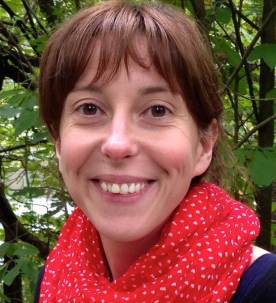
Marta Concheiro-Guisan, Ph.D., is Assistant Professor of Forensic Toxicology at John Jay College. She has experience in the development and validation of new analytical methods and toxicological analysis of different types of specimens–including plasma, blood, urine, oral fluid, hair, sweat and other tissues. She has participated in Drugs and Driving Research Projects, including the ROSITA (Road Site Testing Assessment) and DRUID (Driving Under the Influence of Drugs) European Projects, to study alternative matrices to detect drug impairment, and in clinical protocols involving different types of drugs of abuse and drug exposure during pregnancy. Dr. Concheiro-Guisan has more than 40 publications in peer-reviewed journals.
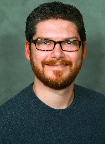 Jeff Coots, JD, MPH, serves as the Director of the From Punishment to Public Health (P2PH) initiative based at John Jay College. Prior to joining P2PH, Mr. Coots completed a joint Juris Doctor/Masters of Public Health degree program at Northeastern University School of Law and Tufts University School of Medicine, where he focused his studies on the social justice and health impacts of mass incarceration. While in Boston, he served as an Albert Schweitzer Fellow and delivered dialogue-based “Health Reentry” workshops to introduce strategies for working in collaboration with a primary care provider to prevent new infections and mitigate the effects of chronic disease.
Jeff Coots, JD, MPH, serves as the Director of the From Punishment to Public Health (P2PH) initiative based at John Jay College. Prior to joining P2PH, Mr. Coots completed a joint Juris Doctor/Masters of Public Health degree program at Northeastern University School of Law and Tufts University School of Medicine, where he focused his studies on the social justice and health impacts of mass incarceration. While in Boston, he served as an Albert Schweitzer Fellow and delivered dialogue-based “Health Reentry” workshops to introduce strategies for working in collaboration with a primary care provider to prevent new infections and mitigate the effects of chronic disease.
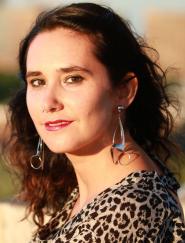 Heidi Hoefinger, Ph.D., is a Visiting Scholar in John Jay College’s anthropology department, where she teaches a course on gender and sexuality within the social and cultural contexts that exist in an increasingly integrated but unequal global world. She also works on a large European Research Council (ERC) project led by Kingston University in London, in which she is the New York-based ethnographer looking at anti-trafficking efforts in New York City, and their effect on sex work/ers and migration policy. Among her areas of interdisciplinary research interest are gender and sexuality, globalism and transnationalism, and drug use.
Heidi Hoefinger, Ph.D., is a Visiting Scholar in John Jay College’s anthropology department, where she teaches a course on gender and sexuality within the social and cultural contexts that exist in an increasingly integrated but unequal global world. She also works on a large European Research Council (ERC) project led by Kingston University in London, in which she is the New York-based ethnographer looking at anti-trafficking efforts in New York City, and their effect on sex work/ers and migration policy. Among her areas of interdisciplinary research interest are gender and sexuality, globalism and transnationalism, and drug use.
National Network for Safe Communities Hosts Film Screening, Panel on Opioid Crisis
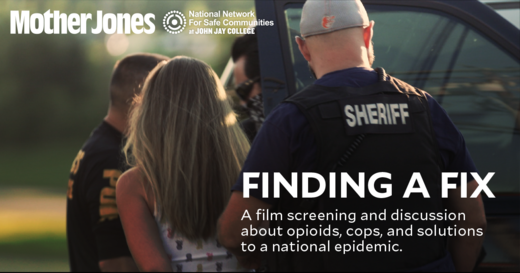
By Raymond Legendre
Amidst the deadliest drug epidemic in American history, the National Network for Safe Communities (NNSC) hosted a documentary film screening and panel discussion on October 2 that highlighted why the opioid crisis is so difficult to stop, and shared the actions being taken in New York City to save lives.
The event featured the Mother Jones short documentary series, Finding a Fix, with a brief introduction by filmmaker Mark Helenowski, and a subsequent panel conversation including New York City council member Stephen Levin, Manhattan Assistant District Attorney Kaitrin Roberts, and community organizer Marilyn Reyes, co-chair of the Peer Network of New York. Mother Jones reporter Julia Lurie also participated on the panel, which was moderated by NNSC Director David Kennedy.

In 2017, drug overdoses claimed an estimated 72,000 lives in the U.S., according to the Centers for Disease Control and Prevention. Of those deaths, more than 49,000 were attributed to opioids. New York City alone recorded around 1,500 overdose deaths last year. The current death rate is equal to one New Yorker dying from an overdose every six hours, according to ADA Roberts. The availability of Narcan, a nasal spray that can reverse opioid overdose, is often the different between fatal and non-fatal overdoses, the prosecutor also noted. In August 2017, New York became the first state to make no-cost or lower-cost medicine to reverse opioid overdoses available at pharmacies.
To learn more about the event, read the rest of this article on the NNSC website. To learn more about the work NNSC does, visit their homepage.
CUNY Graduate Center Hosts Press Briefing by Immigration Experts
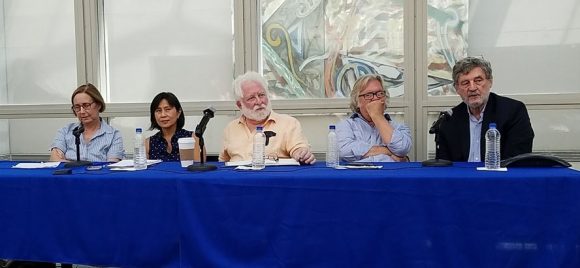
August 8, 2018 – The Graduate Center of CUNY has the benefit of some of the best immigration scholars in the country. Ahead of the 2018 midterm elections, in which this contentious issue will play (and has already been seen to play) a big role, six distinguished faculty experts on immigration sat down to brief the press on a variety of issues surrounding evolving immigration policy under the Trump administration and related issues, including demographics, economics, and the sociocultural experience of immigrants in the United States.
The panel kicked off with CUNY Graduate Center Distinguished Professor of Sociology Richard Alba, who introduced the idea that immigration policy under President Trump is the most restrictionist and selective this country has seen since the inter-war period of the 1920s. However, he suggested that there are a number of structural constraints on this administration’s ability to push immigration restrictions too far. These include business’s need for new workers, both skilled and unskilled; demographic indicators of an impending dearth of young workers; and a lack of political will even among a Republic Congress to enact major immigration legislation.
Next, David Brotherton, a professor of sociology and criminologist from John Jay College, brought up the idea that the “deportation regime” under Donald Trump is not unique in the history of the United States. He noted earlier examples of deportation- or exclusion-oriented federal policy, including the 1996 Immigrant Responsibility Act, Indian Removal Act, and the 19th century Chinese Exclusion Act. Dr. Brotherton went on to discuss the origins of the Trump Administration’s restrictive immigration policies, particularly the president’s campaign tactics of stoking panic in a segment of the population that feels insecure about their place in society. He emphasized that this strategy represents only the latest in a series of moral panics in American history, calling back to the War on Drugs and earlier rhetoric about the dangers of young black and Latino men.
Dr. Brotherton described U.S. Immigration and Customs Enforcement (ICE) as arguably the “largest police force in the United States.” ICE’s detention and deportation of immigrants is retroactively punishing many non-native Americans for crimes in their pasts; because these individuals have since put down roots in the country, with families, jobs and wider communities that are hurt when they are suddenly taken away, the policy is cruel. For this reason, Dr. Brotherton has acted as an expert witness since 2007, testifying to the effects of deportation on the individuals detained, their communities, and even their representation.
A second immigration project that Dr. Brotherton is currently engaged in is “Social Anatomy of a Deportation Regime,” in which he collaborates with Graduate Center faculty to treat New York City – a sanctuary city, and the only city that guarantees representation to immigrant detainees – as a case study. The project aims to look at this problem from all angles and account for many perspectives.
The next commentator was Margaret Chin, a professor of sociology at Hunter College, who focused on the problem of “glass and bamboo ceilings” that stand in the way of Asian-Americans’ achieving educational equity in New York City. She emphasized the importance of taking race into account when designing programs, such as student tracking and race-conscious admissions.
Nancy Foner, Distinguished Professor of Sociology at Hunter College, is the author of a number of books on immigration. During the briefing, she strove to correct immigration myths that are being spread by the president and members of his administration. First, that immigrants are criminals; in fact, immigrants commit less crime than native-born Americans (excepting immigration infractions), and cities and neighborhoods with higher concentrations of immigrant populations have lower rates of crime that comparable neighborhoods. Second, that today’s immigrant populations aren’t learning English; the “three-generation model” continues to be accurate in describing language-learning patterns in immigrant families. The United States can be called a “graveyard of languages” because immigrants tend to lose their native tongues in favor of English – typically by the third generation, individuals are mostly monolingual in English.
Debunking these myths, according to Dr. Foner, is important to reducing the hostility toward immigrants upon which the administration’s restrictive immigration agenda is predicated. She emphasized that social scientists and journalists alike have a responsibility to help publicize the truth about immigrants and their contributions to society.
According to Philip Kasinitz, a Presidential Professor of Sociology at Hunter College, the underlying strategy of the Trump Administration on immigration is difficult to understand, in that much of the policy is self-contradicting. He noted several key contradictions around the thinking on immigration today. For example, the current moral panic conflating immigrants, illegality and crime comes at a time when crime rates – particularly violent crime – is way down. Americans are also increasingly supportive of immigrants and their participation in society, but increasingly make a distinction between legal and illegal, creating a class of people involved socially, economically and culturally in our society but not politically, a fact that is, in his view, bad for a democratic society. Finally, Dr. Kasinitz talked about the generational factors behind a society that is increasingly diverse, but which at the same time harbors extreme anti-immigrant sentiments.
John Mollenkopf, Distinguished Professor of Political Science and Sociology, also noted contradictions inherent to the views of an older, white segment of the population: their anxiety about allowing immigrants into the country is not in their economic best interests, as many are increasingly dependent on low-wage immigrant labor for their care. As a scholar of the acquisition and use of political power, Dr. Mollenkopf opined that the best way to limit the ability of Republicans in Congress to build a base around anti-immigrant sentiment is to mobilize the increasing numbers of immigrant-origin voters and bring new constituencies into the electorate. In New York City, for example, the majority of the electorate is of immigrant origin, but newer immigrants have not yet organized to develop the same amount of political influence as groups that have been in the United States in large numbers for longer.
The panel wrapped up with questions from the audience. In particular, the discussion touched on the movement to abolish or reform U.S. Immigration and Customs Enforcement (ICE), an idea that has received some popular attention among Democrats in the lead up to the 2018 midterm elections. Dr. Brotherton said that “a critical mass of people has disappeared” in Latin American and Central American communities, and immigrants across the country have changed their routines out of fear of the agency. Dr. Kasinitz clarified that, despite popular belief, the number of deportations has not risen; rather, the length of immigrant detentions has grown substantially due to a lack of capacity in immigration courts to process detainees. All agreed that more dramatic action or a greater groundswell of support for reform is needed to signal that ICE’s actions are not acceptable to a majority of Americans.
For more information about the immigration research coming out of the CUNY Graduate Center, please visit the GC Immigration page.
Fostering Success in STEM – Dr. Edgardo Sanabria-Valentín
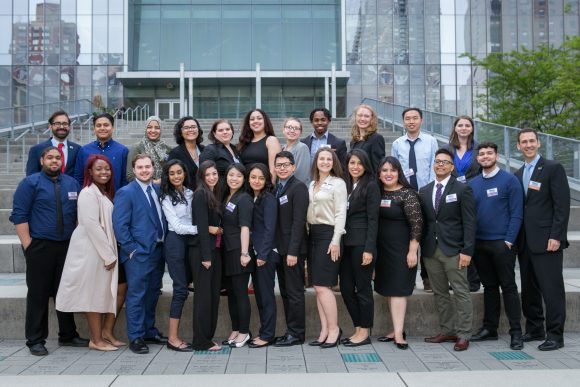 Dr. Edgardo Sanabria-Valentín sees himself in the PRISM students he works with. He credits his alma mater, the University of Puerto Rico, with instilling in him the spirit of preparedness that he brings to student researchers and presenters at John Jay — being ready not only with the technical facts but with the message about why your research is important, and how you are changing the world.
Dr. Edgardo Sanabria-Valentín sees himself in the PRISM students he works with. He credits his alma mater, the University of Puerto Rico, with instilling in him the spirit of preparedness that he brings to student researchers and presenters at John Jay — being ready not only with the technical facts but with the message about why your research is important, and how you are changing the world.
“Because of that, every time we go to a conference, we get minimum one award — my top is three!” he says. “Every time we go to an undergraduate research conference, John Jay’s name always comes up.” It is this tangible commitment to bringing out the best in John Jay’s science students that earned Dr. Sanabria-Valentín, who is the Associate Director of the John Jay Program for Research Initiatives in Science and Math (PRISM), a 2018 APACS President’s Award.

At its heart, PRISM is about teaching students skills, not only in the sciences but also to prepare them to succeed in and after college. “The bread and butter upon which PRISM was founded” is the Undergraduate Research Program. The program provides students with opportunities to be exposed to the process of science beyond their normal classroom studies by working directly with a faculty mentor on an original STEM research project.
And PRISM has grown. A second component is the Junior Scholars program, giving academic support to eligible students that can include stipends, professional development events and supplementary advisement, as well as financial support in applying to post-graduate programs in New York State-licensed professions. Just as important for an institution that counts many first-generation college students among its student body, Junior Scholars collaborates with student support services across the college, like the Math and Sciences Research Center, Center for Career and Professional Development, Wellness Center, Center for Postgraduate Opportunities, and even more. The program is designed to make sure that students have all the tools to get to know their college and excel.
External funding is part of what drives PRISM’s growth. The New York State Collegiate Science and Technology Entry Program, or CSTEP, awards grants to postsecondary and professional schools to start academic support programs — like PRISM — for students from underrepresented minority groups, or who are economically disadvantaged, to help them get into STEM fields. John Jay was among the first class of schools to receive CSTEP funding, thirty years ago and out of roughly 200 PRISM students, the CSTEP grant supports 140. Edgardo’s goal is to double that number over the next five years.
His hard work is a large part of why the CSTEP program is at John Jay — after a short hiatus, Edgardo’s application brought the program back in 2015 — and of John Jay’s unique status as the only school to have institutionalized this type of academic STEM-focused support initiative. He is also responsible for collaborating with other CSTEP schools in the region: NYU, Hostos Community College, Fordham, City College and Mt. Sinai are among the Manhattan and Bronx institutions that participate with John Jay in our CSTEP Regional Research Expos. Participating students are invited to present their own research in poster sessions and attend professional development activities.
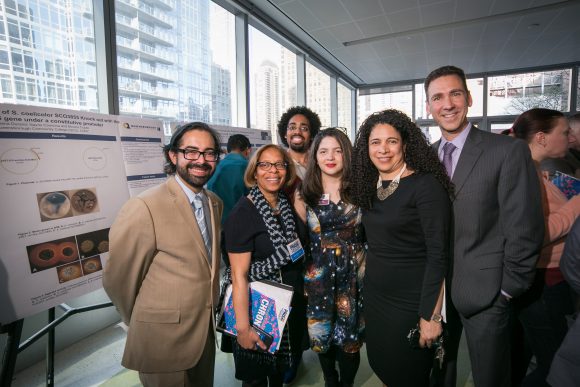
His work on and logistical support for the expos has earned Edgardo an award from the President of the Association of Program Administrators for CSTEP and STEP (APACS). The honor also recognizes his success in running a program that benefits students in the sciences. The advisement services offered by PRISM have created the conditions for increased student success at John Jay and degree completion, and the program puts students on a path toward the pursuit of higher degrees, or toward a place in the workforce in a variety of science, technology and computer science fields. The Undergraduate Research Program has measurably helped students to pursue post-graduate degrees in science, medicine and more.
The bottom line for Edgardo, though, is his students. “My kids blow me away every time,” he gushes. “I have complete pride in showing them off at every conference I go to. I have learned so much by helping them with posters and advising on their projects; it’s encouraging that I sometimes find my students to be smarter than me.”
Learn more about:
PRISM: http://prismatjjay.org/
APACS: http://www.apacs.org/
CSTEP in New York State: http://www.highered.nysed.gov/kiap/colldev/CollegiateScienceandTechnologyEntryProgram.htm
 Edgardo Sanabria-Valentín, Ph.D. is the Associate Program Director for PRISM and also the Pre-Health Careers Advisor at John Jay. He holds a Ph.D. from NYU-School of Medicine, where his dissertation work involved studying the mechanisms Helicobacter pylori employs to persist in the human stomach for the life span of each host. He came to John Jay after a Post-Doctoral Fellowship at Harvard Medical School followed by 3 years working in the Biotechnology Industry in Boston. Dr. Sanabria-Valentín is the recipient of the ESCMID Young Scientist Award (2007), a Leadership Alliance-Schering Plough Graduate Fellowship (2006), and the NBHS-Frank G. Brooks Award for Excellence in Student Research (2001). He is also a founding member of the NYC-Minority Graduate Student Network and The Leadership Alliance Alumni Association.
Edgardo Sanabria-Valentín, Ph.D. is the Associate Program Director for PRISM and also the Pre-Health Careers Advisor at John Jay. He holds a Ph.D. from NYU-School of Medicine, where his dissertation work involved studying the mechanisms Helicobacter pylori employs to persist in the human stomach for the life span of each host. He came to John Jay after a Post-Doctoral Fellowship at Harvard Medical School followed by 3 years working in the Biotechnology Industry in Boston. Dr. Sanabria-Valentín is the recipient of the ESCMID Young Scientist Award (2007), a Leadership Alliance-Schering Plough Graduate Fellowship (2006), and the NBHS-Frank G. Brooks Award for Excellence in Student Research (2001). He is also a founding member of the NYC-Minority Graduate Student Network and The Leadership Alliance Alumni Association.
John Jay Scholars on the News — Re-enfranchising the Justice-Involved
In mid-April, New York Governor Andrew Cuomo signed an executive order re-enfranchising paroled persons with felony convictions. The move sidestepped the Republican-controlled state legislature and does not change state law; instead, the governor intends to issue pardons for individuals convicted of felonies and currently on parole in New York – up to 35,000 individuals – as well as pardoning any new felons entering the parole system each month. The order has been criticized on all sides, both for overstepping the bounds of gubernatorial power as well as for not going far enough to address criminal justice and electoral reform.
We asked some of our own faculty and staff what they thought of the move, and whether it might be a harbinger of further voting reform for the justice-involved, both in New York State and across the United States.
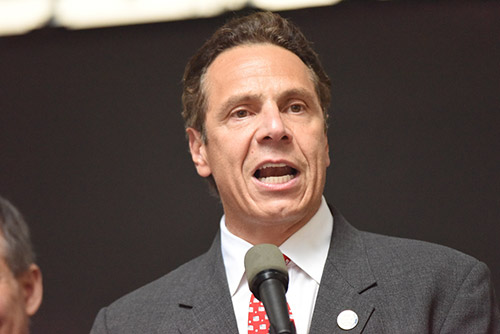
Gloria Browne-Marshall (Associate Professor, Constitutional Law): Only about seven nations disenfranchise formerly incarcerated citizens.
Alison Wilkey (Director of Public Policy, Prisoner Reentry Institute): The impacts of disenfranchisement on communities have intensified with mass incarceration. In 2016, the Sentencing Project estimated 6.1 million people were disenfranchised as the result of a felony conviction [in the United States].
Why is re-enfranchisement such a significant step? What do you believe the impact will be?
Dr. Baz Dreisinger (Professor, English): Denying those with justice involvement the right to vote is an unparalleled injustice. It’s about time that this be addressed.
Gloria: To withhold the right to vote due to a felony conviction is called a Civil Death. Re-enfranchisement is necessary for re-entry into society. To be placed outside of one’s community is the intended punishment. Once completed, the punished must be re-admitted into society as full members. This includes participation in the political process. All voting rights should be given once imprisonment has ended.
Alison: The right to vote is both a fundamental right and an important responsibility. Voting is the cornerstone of democracy and ensures that citizens are able to play a role in shaping our government. Re-enfranchising individuals on parole in New York State is a significant step towards ensuring a more participatory democracy and equitable society for all.
Governor Cuomo’s executive order will have significant impact on the re-entry process [i.e., individuals returning to society post-incarceration]. Successful re-entry often depends on opportunities for meaningful community engagement. Voting will ensure that individuals on parole have the opportunity to exercise their political voice and formally contribute to their communities.
Re-enfranchisement will also have a generational impact. According to the Urban Institute, 2.7 million children have an incarcerated parent, and more than 5 million children have had a parent in prison or jail at some point during their lifetimes. In many states, formerly incarcerated individuals are disenfranchised even post-sentence, after parole or probation. When parents or older family members are unable to participate in elections, children and younger generations lose their most direct model for civic engagement. Granting individuals on parole the right to vote will ensure that the children and family members of (formerly-) incarcerated individuals more often become involved in the political process.
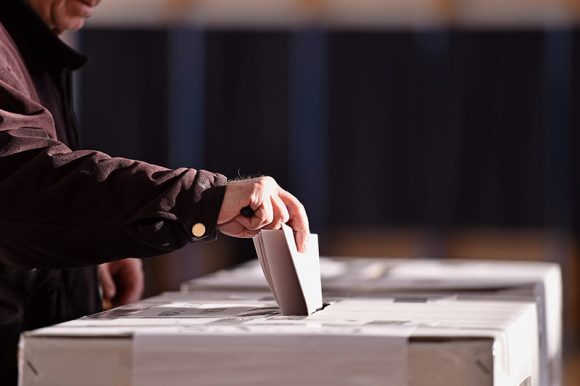
Dr. Heath Brown (Associate Professor, Public Policy): Voting is one of the most important ways to participate in the democracy, so restoring voting rights is a meaningful way to encourage full participation and a truly just society. The impact of restoring voting rights will depend on actual registration and turnout, however. Unfortunately we do not make it very easy to register, even for those who are fully eligible. Voting is also not always easy, especially for those working long hours. Lowering all barriers to full democratic participation would be the best guarantee that all voices are heard on Election Day.
Do you believe there should be any qualifications or exceptions to re-enfranchising the formerly-incarcerated population?
Alison: PRI firmly believes that all individuals, regardless of their involvement in the justice system, should have the right to vote. There should be no moral or character requirement for enfranchisement.
What do you believe is the likelihood or rate at which this population might exercise their right to vote, if re-enfranchised?
Gloria: The Supreme Court is deciding a current case based on whether citizens have a right not to vote. The formerly convicted have a right not to vote. It’s their decision how and when they choose to exercise this and any other Constitutional right.
Alison: Re-enfranchisement will only be as successful as the attendant voter education effort, which needs to be proactive and accessible. Government agencies, community-based organizations, community leaders and grassroots groups have an obligation to communicate with individuals on parole to ensure robust voter registration and subsequent voter turnout.
Heath: Voting is a habit, so those who voted prior to incarceration likely will return to regular voting quickly. I worry more about those who were incarcerated as teens, having never voted. It is for these citizens that a thorough program of civic learning would be most beneficial. I hope colleges, like ours, and civic groups can come together to develop programs to encourage voting and teach about democratic practices. We shouldn’t accept voting as a right that only those citizens who feel most informed and comfortable do. Re-entry programs should add democratic participation to their already Herculean efforts. Under President Mason’s leadership, I hope the John Jay community will lead this movement to promote full voting participation.
Do you think this move by Governor Cuomo has the potential to influence or spread to other states? If so, which ones?
Heath: Substantial political science research shows that innovative state policies spread and diffuse to other states. When it comes to voting issues, partisan conflict will surely factor into whether other states look to New York and this recent decision.
Gloria: Hopefully, New York will influence New Jersey and other states with long parole and probation periods that leave some formerly incarcerated persons in a “civilly dead” limbo for nearly a decade.
Baz: Since this is an archaic, discriminatory and utterly ridiculous law, it seems inevitable that it will collapse nationwide.
Alison: Gov. Cuomo’s executive order represents a wider trend in criminal justice reform that addresses the impact of disenfranchisement. Currently, only Maine and Vermont have granted incarcerated individuals the right to vote. New Jersey is considering similar legislation, and Virginia Governor McAuliffe signed an executive order similar to Gov. Cuomo [in April 2016]. Moreover, the People’s Policy Project report Full Human Beings notes that “several pieces of legislation are being advanced to enfranchise every citizen silenced through incarceration” at both the state and federal levels.

Are you for extending the vote to currently incarcerated individuals as well? If so, should they be registered to vote in their home districts or the districts in which they are incarcerated?
Alison: PRI believes in giving incarcerated individuals the right to vote in their home communities. Participating in the electoral process in their home communities will help incarcerated individuals maintain a connection with their communities, promote civic engagement, and ensure that the wider communities’ needs are addressed.
Disenfranchisement of incarcerated individuals disproportionately affects black and Latinx urban communities, who account for 60% of the prison population but only 27% of the total population. While incarcerated individuals do not have the right to vote in New York, the state draws on census data to draw electoral districts, which counts these individuals as residents of the prison location, not at their home address. The Prison Policy Initiative notes that the majority of New York State’s prisons are built in white, rural communities, which results in the transfer of a “predominantly of-color, non-voting population to upstate prisons, where it is counted as part of the population base for state legislative redistricting, [and] artificially enhances the representation afforded to predominantly white, rural legislative districts.” As the People’s Policy Project report Full Human Beings points out, as a result of prison gerrymandering, “the collective concerns of urban communities of color then go unaddressed.”
Re-enfranchising incarcerated individuals will therefore impact local and national policy on issues that have a direct impact on communities with high rates of incarceration.
Gloria: Voting qualifications are determined by the states pursuant to the US Constitution. Good conduct has been considered a qualification for voting since the colonial era. So it would be difficult for states to allow the incarcerated to vote based on the conduct qualification, political expediency and distribution of power. With over 2 million incarcerated, the prisoner vote would greatly impact the political landscape. If the incarcerated could vote, then should they be able to run for office?

Alison Wilkey is Director of Public Policy at John Jay College’s Prisoner Reentry Institute. Alison joined the Prisoner Reentry Institute as the Policy Director in December 2015. Prior to joining PRI, she worked at Youth Represent as the Director of Policy and Legal Services, and as a staff attorney in the Criminal Defense Practice of the Legal Aid Society in Manhattan. Ms. Wilkey served on the Broad of Directors of the New York County Lawyers’ Association, serving on the Justice Center Advisory Board and numerous other committees. She sat on the Criminal Courts Committee and the Corrections and Community Reentry Committee of the New York City Bar Association. Ms. Wilkey is a graduate of Columbia Law School.
 Dr. Baz Dreisinger is Professor of English at John Jay College. Dr. Dreisinger works at the intersection of race, crime, culture and justice. At John Jay she is the founding Academic Director of the college’s Prison-to-College Pipeline program, which offers college courses and re-entry planning to incarcerated men at Otisville Correctional Facility, and broadly works to increase access to higher education for incarcerated and formerly incarcerated individuals. Her most recent book, published in 2016, is Incarceration Nations: A Journey to Justice in Prisons Around the World.
Dr. Baz Dreisinger is Professor of English at John Jay College. Dr. Dreisinger works at the intersection of race, crime, culture and justice. At John Jay she is the founding Academic Director of the college’s Prison-to-College Pipeline program, which offers college courses and re-entry planning to incarcerated men at Otisville Correctional Facility, and broadly works to increase access to higher education for incarcerated and formerly incarcerated individuals. Her most recent book, published in 2016, is Incarceration Nations: A Journey to Justice in Prisons Around the World.
 Gloria Browne-Marshall is an Associate Professor of Constitutional Law at John Jay College. Professor Browne-Marshall teaches classes in Constitutional Law, Race and the Law, Evidence, and Gender and Justice. She is a civil rights attorney, playwright, and the author of many articles and several books, including The Voting Rights War: The NAACP and the Ongoing Struggle for Justice, and Race, Law, and American Society: 1607 to Present.
Gloria Browne-Marshall is an Associate Professor of Constitutional Law at John Jay College. Professor Browne-Marshall teaches classes in Constitutional Law, Race and the Law, Evidence, and Gender and Justice. She is a civil rights attorney, playwright, and the author of many articles and several books, including The Voting Rights War: The NAACP and the Ongoing Struggle for Justice, and Race, Law, and American Society: 1607 to Present.
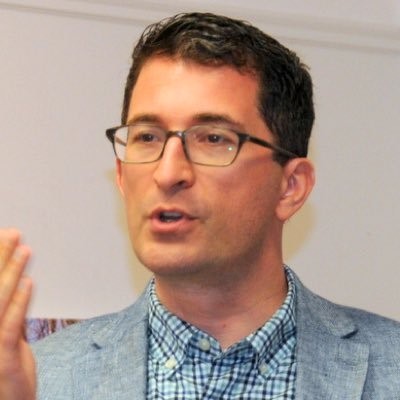 Dr. Heath Brown is an Associate Professor of Public Policy at John Jay College, City University of New York, and the CUNY Graduate Center. In addition to his teaching and research, Dr. Brown is Reviews Editor for “Interest Groups and Advocacy” and hosts a podcast called “New Books in Political Science,” where he interviews new authors of political science books. He is also an expert contributor to The Hill, The Atlantic magazine, and American Prospect magazine.
Dr. Heath Brown is an Associate Professor of Public Policy at John Jay College, City University of New York, and the CUNY Graduate Center. In addition to his teaching and research, Dr. Brown is Reviews Editor for “Interest Groups and Advocacy” and hosts a podcast called “New Books in Political Science,” where he interviews new authors of political science books. He is also an expert contributor to The Hill, The Atlantic magazine, and American Prospect magazine.
John Jay Scholars on the News – Deferred Action for Childhood Arrivals (DACA and Dreamers)
Hundreds of thousands of immigrants to the United States who arrived as children were protected by the Obama-era Deferred Action for Childhood Arrivals program, which allowed them to live, study and work in the country. Shortly after entering office, Donald Trump put a (currently defunct) deadline on phasing out the program and asked Congress to create a permanent solution which has not yet emerged, making these hundreds of thousands of immigrants into a political football and creating extreme anxiety about their futures. Despite professed political will on both sides of the aisle to keep DACA program beneficiaries (often conflated with Dreamers, or supporters of a Development, Relief, and Education for Alien Minors Act) in the country, the process of creating a legislative solution to protect these individuals has gotten bogged down amid new debate over levels of legal as well as illegal immigration, discussion of building a wall on the US’s southern border, and related issues. As a case makes its way through the courts, there are currently no signs of progress being made, whether on a short- or long-term solution for Dreamers, or for comprehensive immigration reform more broadly.
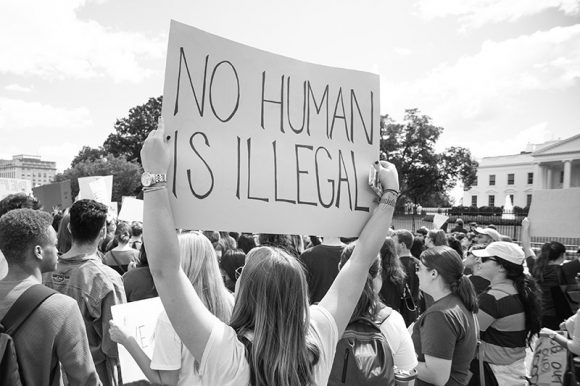
The fight over Dreamers is ongoing, thanks to a court order staying the Trump Administration’s directives to terminate the Deferred Action for Childhood Arrivals (DACA) program and continuing Congressional inaction toward creating a path to citizenship. What do you think is the ideal fix for Dreamers?
Jamie Longazel (Associate Professor, Political Science): Some may argue that blanket citizenship for Dreamers is not possible, but I’m a firm believer in working to expand the realm of possibility.
Isabel Martinez (Assistant Professor, Department of Latin American and Latina/o Studies): The ideal legislative fix for Dreamers is a pathway to citizenship that is not punitive and takes into account the many years that they have lived in the United States. This means eliminating the conditional permanent resident provisions that have been included in several versions of the “Dream Act” that in some cases mandate thirteen total years before the ability to apply for citizenship; lowering application fees; and widening the ability to regularize status. Better legislation would raise the limit on the age of arrival (now sixteen) and remove the maximum age (currently thirty). It would also include a way for Dreamers’ parents to regularize their statuses, either via sponsorship by Dreamers or other citizen children, or on their own. It is wholly punitive to grant children of immigrants a pathway to citizenship and not their parents.
Dan Stageman (Director of Research Operations, Office for the Advancement of Research): Dreamers are a particularly sympathetic class of immigrants because they fit into the American narrative of meritocratic achievement, and because they were too young to be seen as culpable for the “crime” of their unauthorized presence in the US. In a moral sense, however, they are no more deserving of citizenship than low-wage immigrant workers who underpin significant sectors of the American economy, who pay taxes, and contribute to their communities of residence in countless ways. Perhaps more importantly, Dreamers are connected to this supposedly less deserving segment of the undocumented population through family ties and social bonds. So no legislative fix that focuses narrowly on Dreamers is intrinsically good for them – it is simply seen as more politically possible than a genuinely inclusive and comprehensive approach to legislation.
Part of the problem with making a push toward legislative change is that issues tend to fall out of the news cycle or be supplanted by newer and bigger issues. How can activists keep DACA at the forefront of legislators’ minds and continue to push for change?
Isabel: Immigration activists have been fighting for a Dream Act for sixteen years, but what is hopeful is that we are currently seeing the highest percentages of voters supporting a way for Dreamers to remain in the country legally. Activists and allies must be media and politically savvy and ensure that this support continues and grows, and is continuously broadcast to legislators. This means that DACA activists and allies must be media and politically savvy. Media and legislators must also do the right thing to build further support to get a law passed.
Jamie: I think activists deserve a lot of credit for keeping this conversation going, despite the media’s tendency to get bored and move on. My sense is that, within activist circles and immigrant communities, this issue hasn’t gone away at all, even if the national media has stopped covering it and we have temporarily lost legislators’ attention.
One helpful tactic for activists to consider as they try to build the power necessary to enact meaningful change is issue linking. DACA is about immigration, but it’s also about economic injustice, race, and unequal access to certain rights and privileges. By bringing DACA recipients and other undocumented folks into the conversation on, say, universal healthcare (and vice versa), not only does the issue stay on the agenda, but it also helps to boost cross-issue solidarity where we’d otherwise have activists working in silos.
Dan: What is striking is when you see groups like United We Dream – an undocumented youth grassroots organization – shifting their focus to providing practical support for immigrants facing deportation. It’s an indication that the faith these groups place in the political process to solve their very real and immediate human problems is at a low ebb.

Can you state the case for allowing Dreamers to stay in the United States?
Isabel: Dreamers are already Americans! They have assimilated – the only thing that separates them from other young people is a piece of paper. Removing Dreamers would be removing Americans, as well as much-needed talent and potential in which this country has already invested. Additionally, sending Dreamers back to countries and communities that they do not know and where they do not possess social ties is setting them up for failure. These countries have limited plans to receive and integrate them.
Jamie: I don’t think Dreamers are especially deserving because they are high achieving or assimilated. Claims like these can reinforce notions of “us” versus “them” that have long plagued the immigration debate. I think they are deserving because they are human beings, because no one deserves to live in fear, because no one deserves to be denied access to basic rights. I think Dreamers should be permitted to stay in the United States because it is the right thing to do.
Isabel: The other case is rooted in the United States’ obligations as an imperialist state: the majority of DACA recipients are Mexican, approximately 79%. Their arrivals to the United States coincided with the shocks or aftershocks of economic deals, including NAFTA, made between the US and Mexico that had losers as well as winners, namely many poor Mexican families who could no longer survive due to conditions of the deals. If we look at other countries of origin including the Dominican Republic, Guatemala, and El Salvador, we see immigration as the effect of failed or highly lopsided bi-national policies enacted with the United States. This is considered alongside increased border militarization that made the conditions of circular migration deadly and expensive for adult migrants like these young peoples’ parents. The United States has had its hand in the conditions that pushed many families from these communities to enact strategies that let them survive together; as such, the United States has a moral obligation to right these wrongs by receiving and integrating Dreamers and other immigrants.
Dan: I would again broaden the lens to include all “unauthorized permanent residents,” a group that includes any individual who has built the kinds of social and economic ties to the US that are the essential features of establishing long-term community membership, but is unable to legalize their presence. That definition in and of itself makes the case: the ethical framework for community membership goes back at least to Rousseau’s Social Contract, and the mutual obligation it establishes between the individual and their society. Dreamers and other unauthorized permanent residents are fulfilling their end of the social contract through their economic and cultural contributions to American life; unfortunately, the federal government has not reciprocated. Congress passed the last comprehensive immigration law in 1996 – over 20 years ago. The heartbreaking stories that have recently become so common, of individuals deported after 20, 30 or 40 years of US residency, are the direct result of Congress’s historic refusal to address the instability and vulnerability these immigrants have faced throughout their time in the country.
The reality is that vulnerable people are easy to exploit – illegality is, in effect, an informal guest worker program that allows the US economy to benefit from Dreamers and other unauthorized permanent residents without providing for their welfare. This is also why local governments and private prison companies have been able to take increasingly entrepreneurial approaches to their involvement in immigrant detention and deportation. The simple case for a path to citizenship is that these forms of exploitation are morally repugnant and un-American.
What is the best thing others can do to support the Dreamers?
Jamie: If we are talking about folks who are not immigrants, or immigrants who do not have a precarious legal status, then my suggestion would be to stay active – attend rallies, share information, or join an organization. And I think folks should think hard about how our struggles are intertwined. Solidarity is how otherwise powerless groups become powerful. But it is important that Dreamers and other affected immigrants lead the way, because sometimes well-intended actions and words from unaffected people can do more harm than good.
Dan: Give generously to advocacy organizations like the New York Immigration Coalition or the Immigrant Legal Resource Center. Write and call senators and congresspeople in support of DACA legislation. Most importantly, learn about the needs and vulnerabilities of immigrant communities where you live and work, and intervene in whatever way you can.
CUNY has one of the largest populations of Dreamers of any university system in the country, and while it would be irresponsible for any institution to tell these students that we can keep them safe from deportation, we can find other ways to help alleviate the incredible stress they’ve been under since the 2016 election; for example, establishing scholarships and emergency support funds, holding regular legal clinics, providing physical and mental health services, and ensuring the confidentiality of their education data are some of the things that CUNY has taken on to support our Dreamers.
Isabel: Individuals can follow our lead at John Jay for local-level support. For college-going Dreamers, we will be opening an Immigration Student Success Center in the fall that will centralize resources – academic, financial, social and legal – that are essential to their success. This is the culmination of two and a half years of work that focused on creating systems to protect, support, and empower our John Jay Dreamers.
In addition, according to a variety of polls the majority of Americans support a pathway to citizenship for Dreamers. Voters need to turn that passive support into active support and pressure their representatives to vote on a bill ASAP, with calls, emails, visits, op-eds and town hall testimonials that share how important it is that this issue is resolved. This pressure should be placed at all levels of government and in the private sector. Private citizens and corporations can advocate for state and local government to support Dreamers by passing bills that provide in-state tuition, state financial aid, and drivers’ licenses; allow them to obtain professional licenses to practice medicine and law, or teach; and restrict cooperation with DHS and ICE.
Some states and institutions are instituting limited solutions for DACA recipients, like a bill proposed in Rhode Island to allow DACA recipients to obtain drivers licenses and work permits despite expired federal status, or certain universities helping with DACA renewal fees or offering special opportunities for non-citizenship-dependent research and educational opportunities. How helpful do you think these solutions are in mitigating the current circumstances Dreamers find themselves in?
Isabel: These are very helpful, but aren’t enough. In-state tuition and financial aid can mean the difference between DACA recipients enrolling or not in college, and, once enrolled, stopping frequently to save money or paying by semester. And of course, there are significant wage differentials between those with and without college degrees or professional development opportunities. Providing funding for internships and research enables DACA recipients to position themselves to procure better (status and –paying) jobs during school and after graduation.
Dan: While state and local-level solutions are not a replacement for comprehensive federal immigration reform including a path to citizenship, they are absolutely necessary in its absence. Most important among these solutions are the ones that, like California’s recent SB-54, limit law enforcement data sharing and cooperation with Immigration and Customs Enforcement (ICE). It’s important for states and localities to announce their intentions to protect their communities from arbitrary detention and deportation, and follow through with legally binding statutes that prevent local law enforcement agencies from contributing to the process in any way.
Jamie: What I appreciate most about measures like this is their symbolic power. These places are leading by example. They’re showing us what inclusion could look like, showing us that they are not afraid, and expanding our collective sense of what is possible.
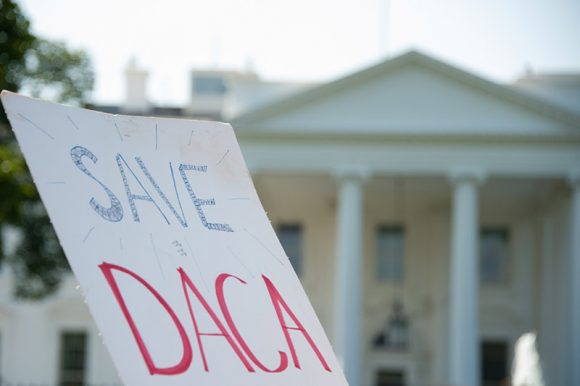
Does the focus on DACA recipients in the news and policy debate overlook other undocumented immigrants, or ease their own paths toward citizenship? Do you believe this debate will end up helping all undocumented residents?
Dan: I think overall the focus on DACA recipients does a disservice to other undocumented immigrants. It sets up a contrast between the supposedly achievement-oriented, ‘model immigrant’ Dreamers, and their hard-working (but often low-wage) parents and neighbors who are no less deserving. This is a false dichotomy, and not one that anyone who supports immigrant rights should be playing into.
Jamie: I think the focus on DACA recipients has overlooked other undocumented immigrants, but only because of the way the issue has been framed (i.e., depicting DACA recipients as deserving in contrast to other undocumented folks). There are plenty of other ways we can frame the issue that are actually favorable to immigrants across the spectrum of legal statuses.
For instance, I think talking about children who were brought to the United States without authorization can complicate what is otherwise a rather simplistic immigration debate. People talk about “legal” and “illegal” immigration as though there is a binary that is synonymous with “good” and “bad.” But here we see that the reality is far more complicated. DACA also opens up an opportunity to talk about nuances that many non-immigrants are unaware of: mixed-status families and the unique experiences of “1.5 generation” immigrants, to name a couple of examples.
What I’m saying is that so much of our public debate has relied on stereotypes and myths! With DACA, I think we have an opportunity to confront and challenge those myths, but we have to be very careful not to reinforce them.
(Answers may be lightly edited for clarity.)
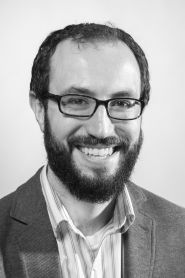 Dr. Jamie Longazel is an Associate Professor in the Department of Political Science at John Jay College. His research examines issues of race and political economy, typically within the contexts of immigration and imprisonment. His recent book, Undocumented Fears: Immigration and the Politics of Divide and Conquer in Hazleton, Pennsylvania, uses the debate around Hazleton’s controversial Illegal Immigration Relief Act (IIRA) as a case study that reveals the mechanics of contemporary divide and conquer politics and makes an important connection between immigration politics and the perpetuation of racial and economic inequality.
Dr. Jamie Longazel is an Associate Professor in the Department of Political Science at John Jay College. His research examines issues of race and political economy, typically within the contexts of immigration and imprisonment. His recent book, Undocumented Fears: Immigration and the Politics of Divide and Conquer in Hazleton, Pennsylvania, uses the debate around Hazleton’s controversial Illegal Immigration Relief Act (IIRA) as a case study that reveals the mechanics of contemporary divide and conquer politics and makes an important connection between immigration politics and the perpetuation of racial and economic inequality.
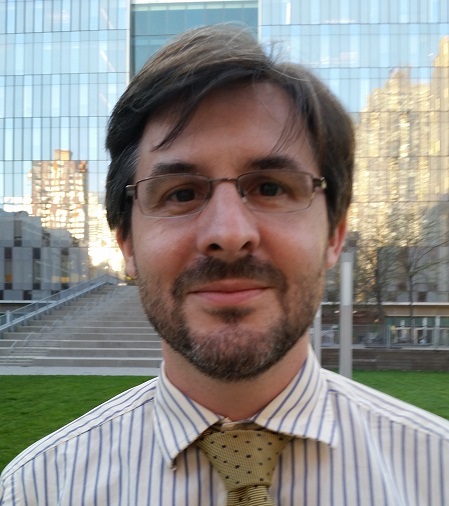 Dr. Daniel Stageman is the Director of Research Operations of John Jay’s Office for the Advancement of Research. His academic work examines political economy and profit in the detention of American immigrants, and the economic context surrounding federal-local immigration enforcement partnerships.
Dr. Daniel Stageman is the Director of Research Operations of John Jay’s Office for the Advancement of Research. His academic work examines political economy and profit in the detention of American immigrants, and the economic context surrounding federal-local immigration enforcement partnerships.
 Dr. Isabel Martinez is an Assistant Professor of Latin American and Latina/o Studies and the Founding Director of U-LAMP, the Unaccompanied Latin American Minor Project, a research and service project that focuses on providing academic, social and legal support to recently arrived immigration minors in removal proceedings. She also serves as the faculty adviser to the JJay DREAMers club.
Dr. Isabel Martinez is an Assistant Professor of Latin American and Latina/o Studies and the Founding Director of U-LAMP, the Unaccompanied Latin American Minor Project, a research and service project that focuses on providing academic, social and legal support to recently arrived immigration minors in removal proceedings. She also serves as the faculty adviser to the JJay DREAMers club.
John Jay Research Blog
The Office for the Advancement of Research, as part of our Public Scholarship Initiative, actively solicits blog entries from John Jay faculty, staff, and external scholars working on issues of key contemporary and historical significance. We promote these entries on social media, including Facebook and Twitter, as well as within the university through a partnership with our Marketing and Development Office. If you wish to contribute an entry, please contact Research Communications Specialist Remmy Bahati at [email protected] with a brief (1-2 sentence) summary of your proposed entry.
John Jay Scholars on the News: What Makes for Smarter Gun Policy?
John Jay Scholars on the News looks at tough issues through the lens of the research our scholars are producing, and informs the way we think about important debates and the role of public scholarship and evaluation. This post was originally published on March 19, 2018.
Following the mass shooting that killed 17 and injured even more at Marjory Stoneman Douglas High School in Parkland, Florida – just the latest high-profile incidence of gun violence in the United States – the conversation in Washington has focused heavily on gun policy. Thanks in large measure to the efforts and activism of MSDHS students since the attack, the issue has remained at the top of the national agenda. On March 14, students from schools around the country walked out of classes to protest widespread gun violence, and protests have taken to the Capitol and state houses to ask for change.
We spoke to scholars and practitioners at John Jay College to ask for their thoughts about what feels like a significant moment in the public discourse on gun policy, and asked how best to move forward.
How does this moment in the national conversation about gun control feel different? Why do you think the response to the Parkland shooting has been so different from previous events? Do you believe the Never Again movement has the potential to make real change?
Christopher Herrmann (Assistant Professor, Law and Police Science): There is certainly a different ‘feel’ about the gun control debate after the Parkland shooting.
Sung-suk Violet Yu (Associate Professor, Criminal Justice): The Never Again organizers are very active. The movement has gained traction, I think, because it is high school students leading it. They are not too helpless (like the young children at Sandy Hook), but also are not jaded, and they have few opponents. They are soon-to-be voters and a soon-to-be major consumer group, whose political views and spending habits are flexible and can be changed, making them a force to be reckoned with. They challenge mindsets and business-as-usual attitudes of politicians and big companies alike.
The organizers are also passionate, and savvy about social networks, and their message resonates with many because the organizers experienced the carnage of school shootings firsthand, and we have all witnessed such tragedies too many times.
Doug Evans (Senior Investigator, Research and Evaluation Center): Emotional appeals hit hard when they come from people who have lived through a difficult experience, and even harder when they come from kids. The high school survivors are motivated and have a platform to address the masses, and people are listening because they can relate, either because they are in high school or are a teenager, or because they have kids of their own. I think the Never Again movement will make real change, but it will be gradual. As more and more young people become involved and realize the collective influence they can have over elections, elected officials will have no choice but to adjust their campaigns to appeal to a younger voting demographic.
Christopher Herrmann: The Never Again movement has already managed to keep an ongoing dialogue on current gun politics and organized nationwide student walkouts, and soon there will be the National March for Our Lives on March 24th in Washington, DC. The question remains if these tactics will contribute to measurable change in the future. So far I think the biggest accomplishment the movement can take credit for is the recent gun bill passed into law in Florida (Senate Bill 7026, also known as the Marjory Stoneman Douglas High School Public Safety Act). While it didn’t accomplish all the gun control measures that were requested, the fact that students and supporters were able to make substantial legislative changes to Florida’s gun laws within three weeks in one of the most pro-gun state legislatures is momentous and noteworthy.
What issues are we losing sight of or glossing over when we talk about mass shootings? How do we take a broader view of gun violence when mass shootings in schools are dominating the news cycle?
Doug Evans: This cannot be stated enough: the NRA has an annual budget of a quarter billion dollars, and often uses an extreme argument (the government wants to take your guns and, ultimately, your rights) in response to reasonable arguments (restricting who can own guns and automatic firearms to prevent mass shootings). Coming to a consensus about the purpose of weapons that can fire ten or more rounds per second and deciding who, if anyone, should have access to these weapons that are capable of causing mass casualties, requires us to take a broader view.
Christopher Herrmann: Using 2015 data from the mass shooting tracker website massshootingtracker.org, we see there were 372 mass shootings in the United States, causing 469 gun fatalities and injuring an additional 1,387 victims. Compare those mass shooting numbers to broader gun violence deaths – there were 36,252 firearm deaths in 2015, comprised of 22,018 suicides, 12,979 homicides (which includes the 469 mass shooting fatalities), and 1,255 ‘other’ gun fatalities. The below chart shows that mass shootings make up less than 2% of all firearm-related deaths in 2015; moreover, school shootings are a very small percentage of mass shootings.

While the media may focus on mass shootings (especially school shootings), our gun politics debate needs to take into account the much larger context of suicide and homicide firearm deaths.
David Kennedy (Director, National Network for Safe Communities): When these mass shootings in schools occur, the public is rightfully outraged, but they are rarely as outraged by the gun violence that regularly causes trauma, fear, and grief in other communities. This is a problem, but also an opportunity to draw wider attention to the routine violence taking place in many marginalized communities. People should know that while we wait for broad solutions for preventing mass shootings, we already have immediate ways for states and cities to address this more frequent violence.
What gun restrictions or legislation, short of a ban, would be the most effective in reducing gun violence?
Violet Yu: It is not that we not know how to have sensible gun control. The simple sad fact is that there is a lack of political, ideological and economic willpower to make this happen. It is startling how easy it is to be a gun owner. At least in the U.S., if you can afford a smartphone, you can afford a semi-automatic rifle. Once purchased, there are minimal to no ongoing maintenance expenses. This affordability allows a large number of people to own multiple firearms, and practice shooting or hunting as hobbies.
It is not a new idea to suggest registering all firearms with an agency, similar to drivers’ licenses. What about mandatory gun owner’s insurance, as expensive as motor vehicle insurance or even a mobile phone subscription? That ongoing expense would remind gun owners that they must take good care of their firearms and not let them fall into the hands of non-legal owners. It is not clear whether a measure placing an artificial economic burden on gun ownership will pass, but we have done this before by levying taxes (i.e., alcohol) or giving tax credits or subsidies as needed. Would it be crazy to add a tax on firearms? I think not.
Christopher Herrmann: I along with the overwhelming majority of Americans (including an overwhelming majority of gun-owning Americans) support a universal background check system that requires all firearm sales to go through a licensed firearms dealer, including private party and gun show transactions. I also support improving the current FBI National Instant Criminal Background Check System, to incorporate any military violations and mental health screenings into the current system, and bans on assault-style weapons and bump stocks. I support a waiting period on prospective gun buyers between three and five days. And I do not advocate arming school employees.
Doug Evans: Although policymakers would like the public to think that legislation is responsible for falling rates of gun violence [in New York City], I think that is an oversimplification. It may be responsible for a small percentage of the reduction, but large cities across the country are in the midst of historic decreases in crime and violence. More prominent than legislation are economic and sociological factors.
Nevertheless, there do need to be restrictions on people with mental illness, both for the protection of the public and would-be gun owners.
What states do you believe provide the best model for potential new national legislation?
Doug Evans: Specific gun laws vary widely not only from state to state but also within states. New York City has experienced decreasing gun crimes and the lowest number of murders in decades, as I noted earlier, but the city’s gun laws are stricter than most jurisdictions would consider implementing. It is extremely difficult to get a gun permit and even more difficult to get a license to carry a gun. Open carry of guns is not allowed anywhere in New York. The considerable paperwork, fees, background checks and additional steps New York has put in place for gaining legal access to guns are far more onerous than most states.
Christopher Herrmann: The governors of New York, New Jersey, Connecticut and Rhode Island recently signed an MOU that will create a multi-state regional task force on gun violence. The objective of the task force is to (1) trace and intercept illegal guns; (2) improve data-sharing, analysis, and response efforts; and (3) establish a multidisciplinary gun violence research consortium containing researchers from criminal justice, public health, public safety, public policy, and social welfare. President Mason, David Kennedy and I were recently included on a conference call and invited to participate.
The federal government, however, has been unable to dedicate a significant research focus on gun violence and has been largely ineffective in developing policy that improves upon any of our current gun violence problems.
(Answers have been lightly edited for clarity.)
 Doug Evans is an adjunct assistant professor at John Jay College, and a Senior Investigator/Project Director at the college’s Research and Evaluation Center. He is currently engaged in an assessment of a system-wide effort in New York City to expedite and enhance arrests, prosecutions and sentencing in felony firearm cases.
Doug Evans is an adjunct assistant professor at John Jay College, and a Senior Investigator/Project Director at the college’s Research and Evaluation Center. He is currently engaged in an assessment of a system-wide effort in New York City to expedite and enhance arrests, prosecutions and sentencing in felony firearm cases.
 Christopher Herrmann is an assistant professor in John Jay College’s Law and Police Science Department. He specializes in crime analysis and crime mapping, and has worked with the NYPD on crime prevention and control strategies. Currently he is working on violence prevention initiatives with the New York City Housing Authority research team at John Jay, concentrating on gun violence in New York City.
Christopher Herrmann is an assistant professor in John Jay College’s Law and Police Science Department. He specializes in crime analysis and crime mapping, and has worked with the NYPD on crime prevention and control strategies. Currently he is working on violence prevention initiatives with the New York City Housing Authority research team at John Jay, concentrating on gun violence in New York City.
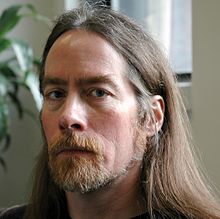 David Kennedy is a professor of criminal justice at John Jay College, and the director of the National Network for Safe Communities. His work with the NNSC supports cities implementing strategic interventions to reduce violence, minimize arrest and incarceration, enhance police legitimacy, and strengthen relationships between law enforcement and communities.
David Kennedy is a professor of criminal justice at John Jay College, and the director of the National Network for Safe Communities. His work with the NNSC supports cities implementing strategic interventions to reduce violence, minimize arrest and incarceration, enhance police legitimacy, and strengthen relationships between law enforcement and communities.
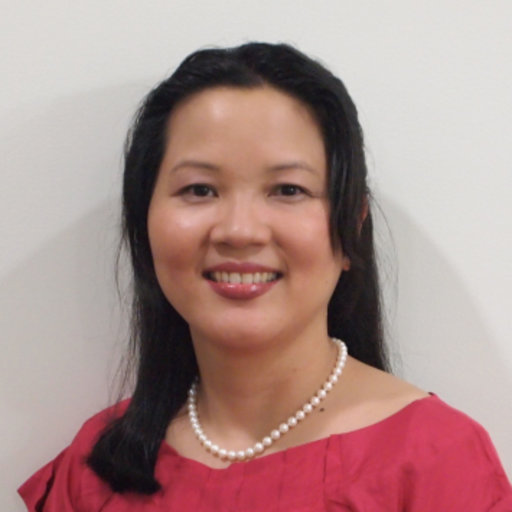 Sung-suk Violet Yu is an associate professor in the Criminal Justice Department at John Jay College. Formerly of the Vera Institute of Justice, she focuses on crime prevention, corrections, and impacts of environments on spatial patterns of crime using statistical methods. Her upcoming article in the Journal of Interpersonal Violence is “Illegal Firearm Availability and Violence: Neighborhood Level Analysis.”
Sung-suk Violet Yu is an associate professor in the Criminal Justice Department at John Jay College. Formerly of the Vera Institute of Justice, she focuses on crime prevention, corrections, and impacts of environments on spatial patterns of crime using statistical methods. Her upcoming article in the Journal of Interpersonal Violence is “Illegal Firearm Availability and Violence: Neighborhood Level Analysis.”
John Jay Scholars on the News: What Explains Falling Urban Crime Rates?
The following piece is the first in a series of interviews with faculty on their responses to questions making a big impact in the news. John Jay Scholars on the News looks at tough issues through the lens of the research our scholars are producing, and informs the way we think about important debates and the role of public scholarship and evaluation. It was originally published on January 17, 2018.
After a year or more of heated rhetoric around ostensibly rising rates of violent crime in many American cities, recently published statistics showing crime rates in some of these cities falling sharply have captured the attention of policy makers and academics alike. Subsequent discussion in the public sphere has tried to link policing strategies to these reductions in crime; in New York City, for example, some of that discussion has looked at the cessation of stop-question-frisk policies in New York City and our record low rates of violent crime. Because John Jay is a college with a unique focus on policing and criminal justice-related issues, we reached out to some of our faculty and staff to find out what they think is causing crime rates to drop, and whether police forces can take some of the credit.
To start, we talked with Associate Professor Eric L. Piza from the Department of Law and Police Science. He was careful to begin by qualifying his answer, reminding us that the real world isn’t controlled like an experiment, but went on to suggest that proactive, evidence-based policing strategies the NYPD began in the ’90s may have contributed to recent declines in crime rates.
It’s always tough to attribute precise credit for crime declines. The real world isn’t a laboratory, so we can’t

Department of Law & Police Science
carefully control conditions and isolate causal mechanisms. But with that said, looking at policing research suggests that the NYPD deserves some credit for the crime reduction. Research evidence suggests that proactive, focused policing has a much greater impact on crime occurrence than reactive policing. Importantly, the de-commitment from stop-question-frisk did not spell the end of proactive policing in NYC. Rather, the NYPD has revamped their processes to emphasize team policing and enhance community engagement. Projects such as Cure Violence and Focused Deterrence have also dedicated additional resources to focus on the highest risk offenders and neighborhoods experiencing disproportionate levels of gun violence.
Expanding the focus to the historical crime decline, I think there’s also evidence to support the influence of police. When Commissioner [William] Bratton first arrived at the NYPD in the early 1990s, the rapid pace with which the agency deployed Broken Windows policing tactics left little time for the type of controlled evaluations that could rigorously test their influence. However, we now have ample research evidence to say that Broken Windows is indeed an effective crime reduction strategy so, in hindsight, I think we can say that the NYPD deployed an evidence-based crime reduction strategy in the 1990s.
We also reached out to Meaghan McDonald, Director of the Group Violence Intervention strategy at the National Network for Safe Communities. She broaded our perspective, highlighting strategies that are working in cities around the country, not just in New York.
Cities as different as Detroit, Newburgh [NY], New Haven and New York City have significantly reduced or maintained historically low levels of homicides and shootings over the past year. They did so in part by doing what we know can work: focusing law enforcement, community influence, and support and outreach resources for the people who are most likely to be the victims and perpetrators of violence.
People in groups — gangs and crews — are disproportionately involved in serious violence, and when police and communities concentrate their efforts on keeping these people alive and out of prison, they can maximize ROI [return on investment]. Agencies focusing on group violence are recognizing the power of advance communication to this population and, when a law enforcement response is necessary, making sure it is focused and legitimate.
When cities take this approach, they have a greater chance of fundamentally changing the dynamics of violence in their city.
Lest we feel overconfident about attributing causation, we were left with a word of caution from Jeffrey Butts, the director of the Research and Evaluation Center, that should guide all John Jay scholars whatever their field of study.
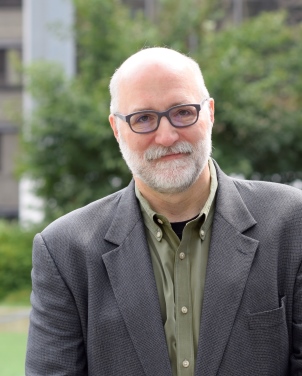
Research & Evaluation Center
When asked about fluctuating crime rates or differences in crime between cities, a genuine scholar starts with a raised eyebrow or furrowed brow and then goes on to describe various other factors that could be contributing to the difference. Researchers — as opposed to politicians — never point to just one cause. Only after careful investigation of other explanations will a researcher be bold enough to reject the null hypothesis, although they address cause and effect only in terms of ‘explained variance’ or ‘effect size.’
This is why the general public listens to politicians more than they listen to scholars and academics. It’s easier, and can be comforting when someone in authority provides a simple explanation for the frightening uncertainty that surrounds us. Researchers, however, thrive in uncertainty.
(Answers have been lightly edited for clarity.)



Recent Comments